| To make the connectors at the engine control unit less accessible, the engine control unit -1- is bolted to a protective housing -4- by means of a locking element -2- and shear bolts -3-. |
| To make it even more difficult to screw out the shear bolts, the threads are coated with locking fluid. |
| The locking element -2- must be separated from the protective housing to enable the connectors to be unplugged from the engine control unit (e.g. when connecting the test box). This procedure is described in the following. |

WARNING | Exact compliance with the following operations is essential so as not to damage (scorch) wiring, connectors, insulation and control units. Heed the operating instructions for the hot air blower. |
|
|
|
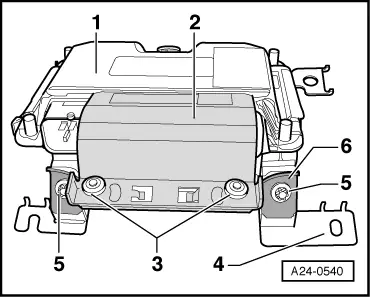
|
 Note
Note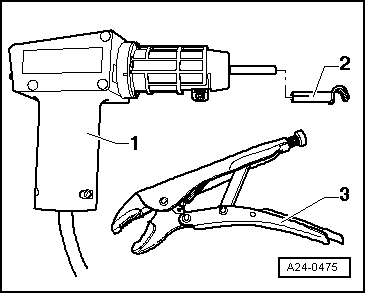


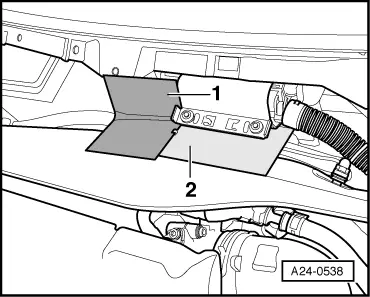
 Note
Note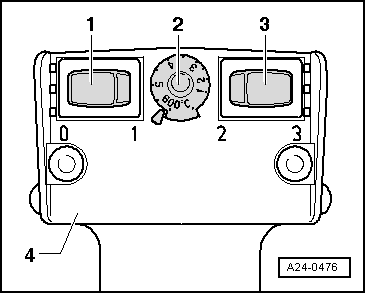
 Note
Note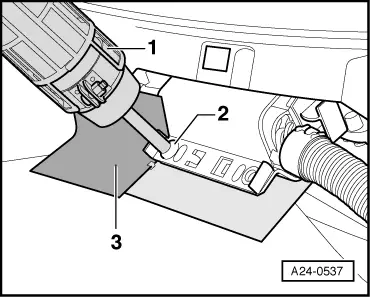
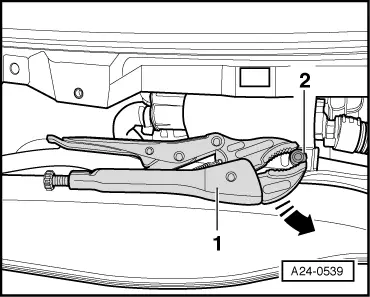
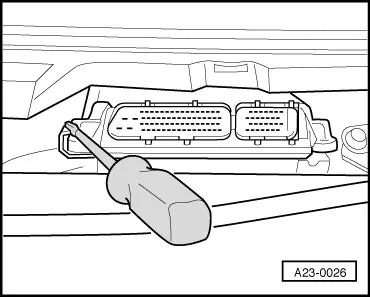
 Note
Note Note
Note Note
Note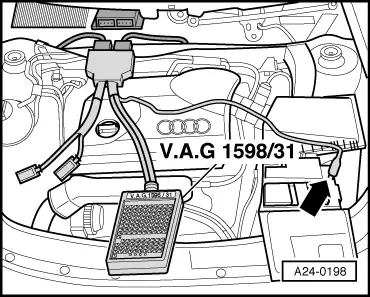

 WARNING
WARNING